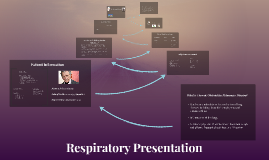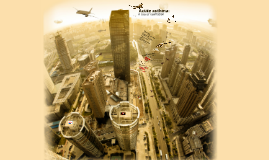Respiratory Presentation
Transcript: Video Link: Websites: an allergic disorder of respiration, characterized by bronchospasm, wheezing, and difficulty in expiration, often accompanied by coughing and a feeling of constriction in the chest. The diaphragm is a muscle and when it expands, it creates a negative pressure in the lungs, this makes the air outside (which has a relatively positive pressure) want to flow into the lungs and maintain equilibrium. When the diaphragm contracts it creates a positive pressure in the lungs and the air is forced out. Hilus- the tube in humans and other air-breathing vertebrates extending from the larynx to the bronchi, serving as the principal passage for conveying air to and from the lungs; the windpipe. Combination inhalers Alveoli- Past, Present, & Future Surgical & Healing Methods Bronchus- *Herbal Remedies *Vaccines *Mechanical Ventilation on the ends of the bronchioles Vocabulary How the Respiratory system works with the Circulatory and Nervous system to control breathing... Foreign particles in the system... By: Halle Hanks Kathryn Farley Natalie Foster Bibliography The job of the larynx is to produce sound and it is another name for the voice box. Epiglottis plural of bronchus. a muscular and cartilaginous structure lined with mucous membrane at the upper part of the trachea in humans, in which the vocal cords are located. either of the two main branches of the trachea. A Career dealing with the Respiratory System Diaphragm http://www.youtube.com/watch?v=hc1YtXc_84A Trachea Respiratory Therapist In England during the seventeenth century, it was the custom for all those within earshot of someone who sneezed to remove their hats, bow, and shout, "God bless you!" In nineteenth-century England, someone originated a rhyme regarding the consequences of sneezing on certain days of the week: Sneeze on Monday, sneeze for danger. Sneeze on Tuesday, kiss a stranger. Sneeze on Wednesday, sneeze for a letter. Sneeze on Thursday, something better. Sneeze on Friday, sneeze for woe. Sneeze on Saturday, a journey to go. Sneeze on Sunday, your safety seek—for Satan will have you for the rest of the week! 1st Period The air first enters into the nasal cavity then proceeds to the pharynx. Air is warmed by the nasal passages. It passes through the trachea, then to the main bronchi and begins its descent into numerous bronchioles in the lungs. , At the ends of each bronchiole, there are clumps of aveoli. Here, the air we breathe passes into the bloodstream as oxygen. At the same time, carbon dioxide is released from the bloodstream to the aveloi, which expel it into the bronchioles, up through the lungs to the main bronchi, up the trachea, and back up to and out either the nose or the mouth. bronchi: big branch bronchioles: smaller branches Long-acting beta agonists (LABAs) a thin, valvelike, cartilaginous structure that covers the glottis during swallowing, preventing the entrance of food and drink into the larynx. When a foreign particle enters the system, a reflex is triggered. Your body will either cough or sneeze to get rid of the irritants before they reach the alveoli. Steps to expel foreign particles include... 1. Irritation 2. Inhalation 3. Compression 4. Expulsion Diffusion: oxygen enters the alveoli, and from there diffuses into the blood, while carbon dioxide moves out of the alveoli and into the bronchioles, and is exhaled normally. Epiglottis- http://www.lung.org/your-lungs/how-lungs-work/?gclid=CKq6jOeslK8CFWuHtgodnFILzQ a small branch of a bronchus. Leukotriene modifiers Trachea- How the parts of the system work together to get the Body oxygen Asthma: Superstitions!!!!!!!! Intro to Respiratory System the region at which the vessels, nerves, etc., enter or emerge from a part. Larynx- The Respiratory System Required Education: One must have, at least, an associate degree to work as a respiratory therapist, but most programs that train people to work in this field offer bachelor's degrees as well. Respiratory therapy students will take many science-oriented courses including human anatomy and physiology, physics and microbiology. They will also learn about therapeutic and diagnostic procedures, patient assessment and medical recordkeeping and reimbursement. Job Requirements: To work as a respiratory therapist in the U.S. (except in Alaska and Hawaii) one must pass the Certified Respiratory Therapist Exam (CRT) which is administered by the National Board for Respiratory Care. Respiratory therapists must be able to: •pay attention to detail •work on a team •follow instructions •use a computer *Many employers require CPR (cardiopulmonary rescusitation) certification. Nervous: -The Medula, located inside the Brain stem, controls involuntary muscle movement-breathing -The spinal cord delivers the messages from the brain to the rest of the body a thin, valvelike, cartilaginous structure that covers the glottis during swallowing, preventing the entrance of food and drink into the larynx. Bronchi- an air cell of the

















